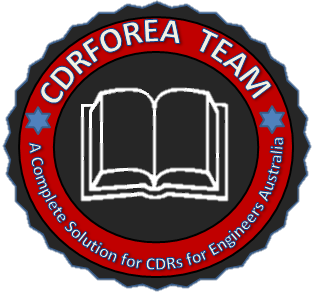Assessing Authority Engineers Australia: Complete Guide to Migration Skills Assessment
Engineers Australia (EA) is Australia’s official assessing authority for engineering qualifications. As the government-approved body, EA evaluates overseas-trained engineers to ensure their skills, experience and education meet Australian standards (https://www.engineersaustralia.org.au). In practice, this means anyone planning to migrate to Australia as an engineer must obtain a Migration Skills Assessment (MSA) from Engineers Australia before applying for skilled visas (such as the Subclass 189, 190 or 491) (https://www.engineersaustralia.org.au). A positive outcome – often called a positive skills assessment – signals that the candidate’s credentials satisfy EA’s requirements, allowing the visa process to move forward.
Engineers Australia is authorised by the Department of Home Affairs to assess overseas engineers’ qualifications and competencies (https://www.engineersaustralia.org.au). This article explains what EA’s role is, who needs its assessment, which assessment pathways exist (Australian qualifications, international accords, CDR), the documentation required, timelines, fees, and tips to succeed. It draws on official EA guidance and up-to-date sources to help aspiring migrants understand every step of the skills assessment process.
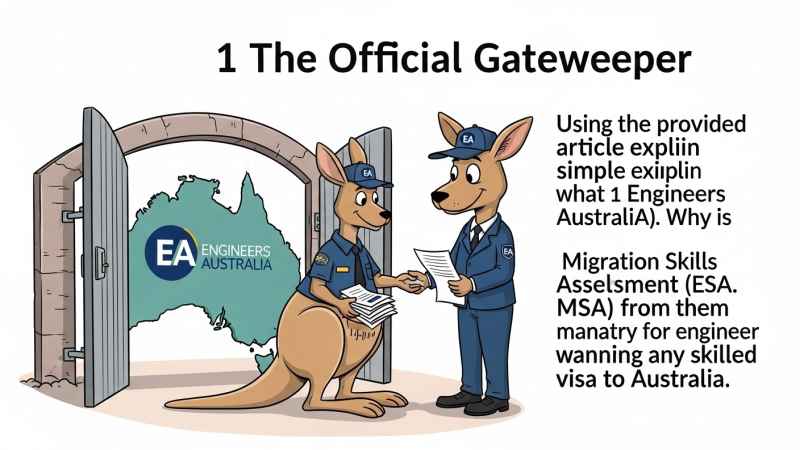
Who Is Engineers Australia and Why It Matters
Engineers Australia is Australia’s national body for engineers, with over 130,000 members. Crucially, it is also the Australian government’s designated assessing authority for most engineering occupations (https://www.engineersaustralia.org.au). EA works closely with the Department of Home Affairs and migration agents to evaluate engineering credentials, streamlining the migration process for engineers (https://www.engineersaustralia.org.au).
By law, any skilled migration applicant aiming for an engineering occupation on Australia’s Skilled Occupation List must obtain a positive skills assessment from EA. In other words, no visa application can proceed without EA’s MSA outcome. Engineers Australia checks your overseas education, work history, and any evidence of your engineering ability against Australian standards. If you pass, you receive an outcome letter confirming your Australian occupational category (e.g. Professional Engineer, Engineering Technologist, etc.), which you then use in your visa application (https://www.engineersaustralia.org.au).
Who Needs an Engineers Australia Skills Assessment?
Any engineer (or related technologist/manager) educated or trained outside Australia typically needs an EA skills assessment. Specifically, you will apply if:
-
Your degree is not automatically recognized in Australia. If you hold a domestic Australian engineering degree from an EA-accredited program, you follow the Australian qualifications pathway (see below) (https://www.engineersaustralia.org.au). But if your degree is from a foreign university or an unaccredited course, you need a skills assessment.
-
Your degree is from a non-Accord country or unaccredited program. For example, engineers from India, Bangladesh, Pakistan, Sri Lanka, Nepal and many other countries generally do not have Washington/Sydney/Dublin Accord recognition, so they must go through EA’s CDR pathway (https://www.engineersaustralia.org.au).
-
You intend to work in one of the four engineering occupations. Engineers Australia recognizes four occupational categories for migration: Professional Engineer, Engineering Technologist, Engineering Associate, or Engineering Manager (https://www.engineersaustralia.org.au). If you plan to apply for any of these occupations under ANZSCO codes (e.g. Civil Engineer 233211, Mechanical Engineer 233512, Engineering Manager 133211, etc.), you need an EA skills assessment.
-
You are applying for an Australian skilled visa. Common visas requiring EA assessment include the Skilled Independent (189), Skilled Nominated (190) and Skilled Work Regional (491) visas. In each case, a valid EA assessment is mandatory.
Even recent graduates must apply if their qualifications are not already on EA’s list of accredited programs. If you’re unsure whether your degree qualifies for the simple Australian pathway, EA provides a qualification checker and guidelines (see the next section).
Engineering Qualification Pathways
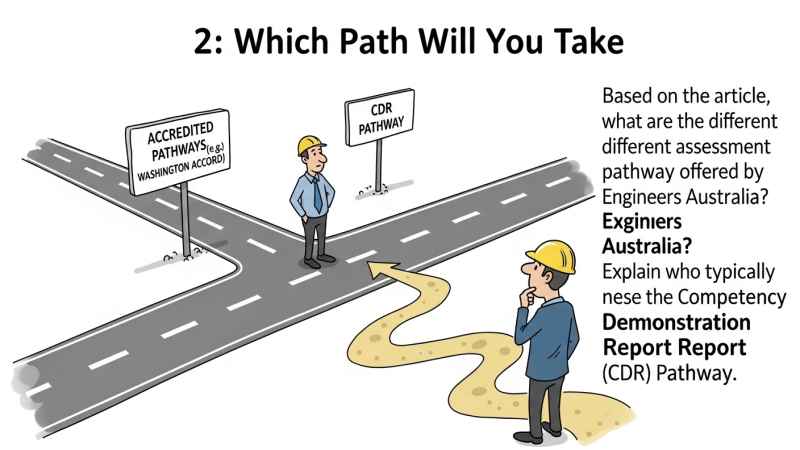
Engineers Australia offers five main pathways for a skills assessment, depending on your qualifications and circumstances (https://www.engineersaustralia.org.au). These pathways are:
-
Australian Qualifications Pathway. For engineers who completed a university degree in Australia from an EA-accredited program. Such graduates are deemed to have met the Stage 1 competencies and can apply directly under the Australian pathway (https://www.engineersaustralia.org.au).
-
Washington Accord (Professional Engineer). If your degree is in a Washington Accord signatory country (e.g. USA, UK, Canada, Singapore, etc.) and the program is fully accredited under WA, you use this pathway to be assessed as a Professional Engineer (https://www.engineersaustralia.org.au). WA signatories have mutual recognition agreements for four-year engineering degrees.
-
Sydney Accord (Engineering Technologist). This is for three-year engineering technology qualifications from Sydney Accord countries (e.g. the UK, Canada, Malaysia, etc.). It leads to assessment as an Engineering Technologist.
-
Dublin Accord (Engineering Associate). For two-year associate or advanced diploma qualifications from Dublin Accord countries (e.g. UK, South Africa, etc.), for the Engineering Associate category.
-
Competency Demonstration Report (CDR) Pathway. This is the catch-all for non-accredited or non-Accord qualifications (https://www.engineersaustralia.org.au). If your degree is not covered by the above (or if you’re switching occupational categories), you must submit a CDR to demonstrate your competencies and work experience. Under the CDR pathway, EA evaluates your skills and knowledge against the Stage 1 competency standards appropriate to the occupation you nominate (https://www.engineersaustralia.org.au).
Each pathway has specific documentation and eligibility criteria. Engineers Australia provides a handy online “quiz” tool to help you choose the correct pathway based on your country and qualification year. (See EA’s MSA guide for details.)
Pathway Details and Requirements
Accredited Pathways (Australian, Washington, Sydney, Dublin)
For the three Accord pathways and the Australian pathway, the primary requirement is that your educational program was formally accredited at the time of your study (https://www.engineersaustralia.org.au). EA uses records from international engineering agreements (Washington, Sydney, Dublin Accords) and its own accreditation lists. In general:
-
If you completed an Australian engineering degree that appears on EA’s list of accredited programs (and you started it during/after its accreditation year), you can apply via the Australian pathway (https://www.engineersaustralia.org.au).
-
If your degree is from a Washington Accord country and accredited under the WA (after your country became a signatory), apply via the Washington Accord pathway. EA recognizes degrees from countries like USA, UK, Canada, New Zealand, Singapore, etc., if accredited (https://www.engineersaustralia.org.au).
-
Similarly, degrees from Sydney Accord signatory programs (e.g. a 3-year diploma in Australia, Malaysia, etc.) lead to the Engineering Technologist pathway.
-
Degrees under the Dublin Accord (2-year associate programs in signatory countries) fit the Engineering Associate pathway.
Under any accredited pathway, EA essentially trusts that the qualification covered Stage 1 competencies, so you do not need to prepare a CDR. Instead, you simply submit proof of your degree and transcripts (plus other documents listed below).
CDR (Competency Demonstration Report) Pathway
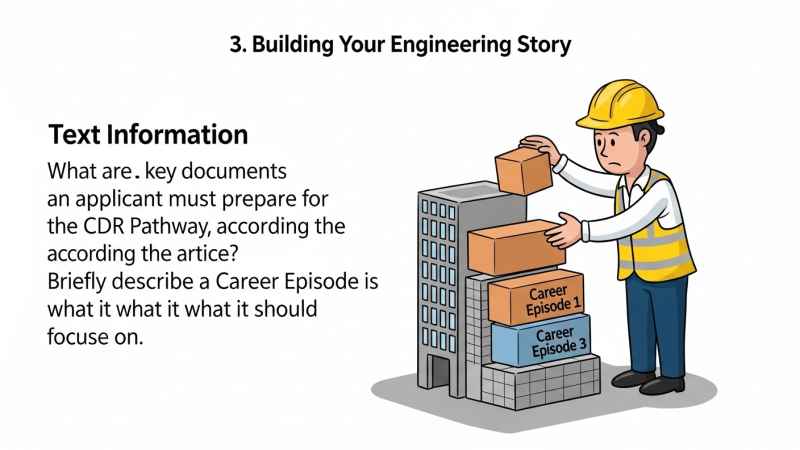
If your qualifications are not covered above, you must use the CDR pathway (https://www.engineersaustralia.org.au). Typical CDR applicants include:
-
Graduates with engineering degrees from non-Accord, non-EA-accredited institutions or countries.
-
Engineers whose qualifications are partially recognized (e.g. “provisionally accredited” Australian programs).
-
Applicants seeking assessment in an engineering occupation different from their qualification title (for example, applying as a Civil Engineer when your degree was in Mechanical Engineering, you may need a CDR to show relevant knowledge) (https://www.engineersaustralia.org.au).
-
Candidates with a combination of qualifications or experiences that cumulatively cover the necessary engineering fundamentals.
The CDR is a detailed written report demonstrating your engineering competency. It includes three Career Episodes (narratives of actual work/projects you have done), a Summary Statement mapping your experience to EA’s competency elements, and a CPD list (https://www.engineersaustralia.org.au). Under this pathway, EA will independently evaluate whether your knowledge and skills meet their Stage 1 standards for the category you nominate (https://www.engineersaustralia.org.au).
What Documents Do You Need to Submit?
No matter which pathway you use, all applicants must provide certain standard documentation as part of the MSA application. These include:
-
Proof of identity: A colour copy of a valid passport bio page is required (https://www.engineersaustralia.org.au). If your name has changed, provide legal documents (marriage certificate, etc.).
-
Passport-style photograph: A recent passport-sized color photo on a plain background (https://www.engineersaustralia.org.au).
-
English language evidence: Results of an approved English test (IELTS General or Academic, TOEFL iBT, or PTE Academic). EA requires a minimum score of band 6.0 in each section for IELTS (or equivalent), and test results must be less than two years old (https://www.engineersaustralia.org.au). (Applicants with an Australian engineering degree or native speakers may be exempt) (https://www.engineersaustralia.org.au).
-
Curriculum Vitae (CV): A comprehensive CV/resume listing your education, employment history, roles, and project experience (https://www.engineersaustralia.org.au).
-
Degree certificates and transcripts: Certified copies of all engineering qualifications, including degree certificates (https://www.engineersaustralia.org.au). Include official transcripts showing subjects and grades. If not in English, include certified translations.
-
Continuing Professional Development (CPD): A list of any additional courses, seminars, or training undertaken since graduation (https://www.engineersaustralia.org.au).
If you are using the CDR pathway, you must also prepare:
-
Career Episodes: Three essays (1000–2500 words each) on engineering projects you completed (https://www.engineersaustralia.org.au).
-
Summary Statement: A template linking your Career Episodes to EA’s competency elements (https://www.engineersaustralia.org.au).
-
CPD Details: As above, but especially important for CDR to show ongoing learning.
-
Optional – Employment Letters: If claiming work experience, include employer reference letters.
Prepare all documents carefully according to EA’s guidelines (https://www.engineersaustralia.org.au). Incomplete submissions can lead to delays.
Submitting the Application & Timing
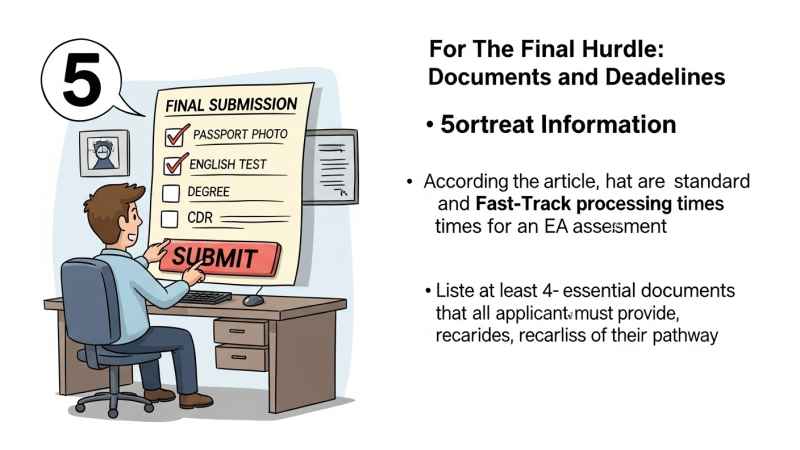
Once you have gathered the required documents, you apply online via the EA member portal (https://www.engineersaustralia.org.au). You will create an account and select “Migration Skills Assessment.” Then choose your assessment pathway and upload the documents.
Processing Time
EA’s official processing times are as follows (https://www.engineersaustralia.org.au):
-
Standard Assessment: Applications are typically assigned to an assessor within 15 weeks (https://www.engineersaustralia.org.au).
-
Fast-Track Option: Guarantees assignment to an assessor within 20 business days (https://www.engineersaustralia.org.au).
You will receive email updates throughout the process. A successful outcome includes a Migration Skills Assessment Outcome Letter (https://www.engineersaustralia.org.au).
Validity of Outcome
The official outcome letter issued by Engineers Australia remains indefinitely valid in EA’s records (https://www.engineersaustralia.org.au). However, visa rules can impose their own expiry. If you receive a negative outcome, you may apply again or request a review (https://www.engineersaustralia.org.au).
Competency Standards: What EA Looks For
Engineers Australia measures all applications against the Stage 1 Competency Standards, which include three broad competency areas (https://www.engineersaustralia.org.au):
-
PE1 – Knowledge and Skill Base: Fundamental engineering knowledge (https://www.engineersaustralia.org.au).
-
PE2 – Engineering Application Ability: Applying engineering methods to solve problems (https://www.engineersaustralia.org.au).
-
PE3 – Professional and Personal Attributes: Professionalism, ethics, and communication (https://www.engineersaustralia.org.au).
Your CDR must explicitly demonstrate how you meet these competencies using “I did this…” statements (https://www.engineersaustralia.org.au).
Costs and Fees
The fees for an EA skills assessment depend on the pathway and any additional services (https://www.engineersaustralia.org.au). Key points for 2025–26 are:
-
Australian/Accord Qualifications: Lower fees apply. Australian Qualification assessment costs $305 AUD (plus GST), and an Accord qualification is $490 AUD (https://www.engineersaustralia.org.au).
-
CDR Assessment: The standard fee is $910 AUD (excluding GST), which is $1001 AUD including GST (https://www.engineersaustralia.org.au).
-
Additional Services: Separate assessments for a PhD or employment are extra (https://www.engineersaustralia.org.au).
-
Fast-Track: An additional fee of $350 AUD (excl. GST) is required (https://www.engineersaustralia.org.au).
All fees are non-refundable. Check EA’s official fees page for current rates (https://www.engineersaustralia.org.au).
Preparing a Strong Application
Best practices to improve your chances of success:
-
Follow the official MSA guides exactly.
-
Write in clear, formal English.
-
Focus on your own work using “I did this…” statements (https://www.engineersaustralia.org.au).
-
Cross-reference competencies in your Summary Statement (https://www.engineersaustralia.org.au).
-
Avoid plagiarism; all writing must be original.
-
Ensure all documents are clear, certified if needed, and translated if not in English (https://www.engineersaustralia.org.au).
-
Consider getting feedback from a peer or professional before submitting.
Frequently Asked Questions
-
What if I don’t want to take an English test? Engineers Australia mandates proof of English competency unless you qualify for an exemption. You must submit a valid IELTS, TOEFL iBT, or PTE Academic score. Exemptions are only for native English speakers or holders of an Australian university engineering qualification (https://www.engineersaustralia.org.au).
-
Can I prepare and submit my CDR myself? Yes, you can write your own CDR. However, you must follow EA’s strict guidelines. Many applicants hire professional services to avoid pitfalls (https://www.engineersaustralia.org.au).
-
What should I do if my CDR is rejected? You can lodge an appeal or request a review (https://www.engineersaustralia.org.au). Alternatively, you can revise your documents and resubmit, but you will have to pay the fee again.
-
How long should each Career Episode be? Each episode should be approximately 1000 to 2500 words long (https://www.engineersaustralia.org.au).
-
How long is a skills assessment result valid? Engineers Australia treats a successful MSA outcome as valid indefinitely in its records (https://www.engineersaustralia.org.au). However, visa authorities may have their own validity window.
Final Thoughts
Obtaining an Engineers Australia Migration Skills Assessment is the critical first step toward your engineering career in Australia. The process is detailed and rigorous, but with thorough preparation and attention to detail, a positive outcome is well within reach.
